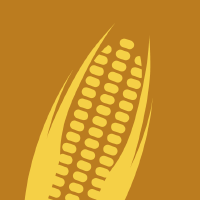Topic Menu
► Topic MenuTopic Editors



Advanced Breeding Technology for Plants
Topic Information
Dear Colleagues,
Food security is one of the major global challenges that we face; specifically, the requirement to feed a global population of 9.2 billion by 2050. Thus, crop production should increase by 70% due to the increase in world population and the effect of climate change (FAO, 2009). However, climate change can dramatically reduce agricultural productivity. Thus, the improvement of cultivars in limited resources may be required for resolving the food security issues in the world. With the advent of new biological technologies, next-generation sequencing, high-throughput phenomics and high-throughput genotyping can be available to use in crop breeding programs for accelerating the development of new or improved cultivars. Phenomics may predict complex traits such as abiotic stresses, and genomics can be an approach in gene discovery for interested traits and development of molecular markers. In addition, these high throughput technologies can be used for plant selection in breeding programs. This Topic aims to promote research on plant breeding with a new advanced selection methods by the utilization of marker-assisted selection, genomics, and phenomics, leading the improvement of crop yield, seed quality, and abiotic stresses in plants. In this Topic, we encourage all original research papers, or reviews on the development of cultivars and relationships between phenotype and genotype using a new plant science approach. This includes plant breeding, advanced selection methods, molecular markers, and genomic selection. Obviously, papers relating to genomics and phenomics are extremely welcome.
Dr. Jeong-Dong Lee
Prof. Dr. Ivan Kreft
Prof. Dr. Hyun Jo
Topic Editors
Keywords
- plant
- breeding
- advanced selection method
- phenomics for selection
- molecular maker
- genomic selection
Participating Journals
| Journal Name | Impact Factor | CiteScore | Launched Year | First Decision (median) | APC |
|---|---|---|---|---|---|

Agriculture
|
3.6 | 3.6 | 2011 | 17.7 Days | CHF 2600 |

Agronomy
|
3.7 | 5.2 | 2011 | 15.8 Days | CHF 2600 |

Crops
|
- | - | 2021 | 30.5 Days | CHF 1000 |

Horticulturae
|
3.1 | 2.4 | 2015 | 14.7 Days | CHF 2200 |

Plants
|
4.5 | 5.4 | 2012 | 15.3 Days | CHF 2700 |

MDPI Topics is cooperating with Preprints.org and has built a direct connection between MDPI journals and Preprints.org. Authors are encouraged to enjoy the benefits by posting a preprint at Preprints.org prior to publication:
- Immediately share your ideas ahead of publication and establish your research priority;
- Protect your idea from being stolen with this time-stamped preprint article;
- Enhance the exposure and impact of your research;
- Receive feedback from your peers in advance;
- Have it indexed in Web of Science (Preprint Citation Index), Google Scholar, Crossref, SHARE, PrePubMed, Scilit and Europe PMC.

